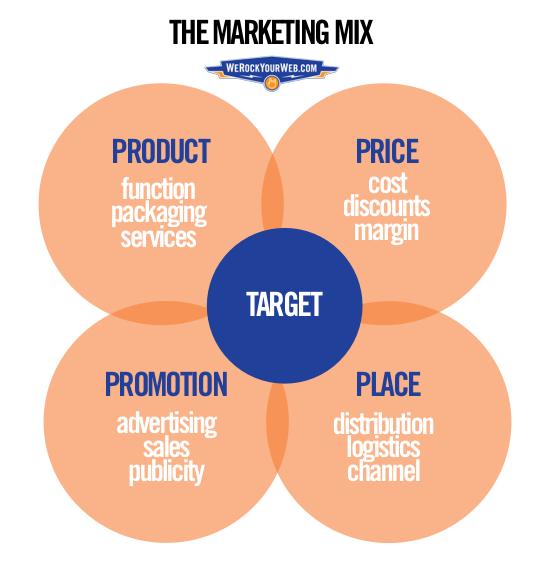If you’re a fan (or a die-hard obsessive, like me) of the AMC television show Mad Men, then you probably remember the opening episode of season 7. SCDP (or Sterling, Cooper, Draper, Price for the unfamiliar) is at risk of churning a client, the footwear company Butler Shoes, because the new head of marketing wants to cut costs by taking their advertising in-house.
Plucky office manager Joan sees an opportunity to not only convince a profitable client to stay, but to also learn some of the foundations of good marketing and advertising.
She arranges a Saturday consultation with a local business professor, to discuss the best ways to position Butler Shoes in a market where consumer tastes are rapidly changing:
Professor: “I get it. It’s 20 degrees out there, and the kids are in sandals. Lowering overhead is not a bad idea.”
Joan: “Is that where you’d start? Keeping in mind the Four P’s?
Professor: “Do you have an MBA?”
Joan: “No, but their head of marketing does.”
As we see later on in the episode, Joan’s crash-course in marketing gives her the tools (and the MBA-level insight) she needs to win the day. She convinces the head of Butler Shoes that his taped-together “in-house” advertising agency doesn’t have a third of the power that SCDP has to keep his company visible, and that during a precarious time for shoe sales, cutting costs at the expense of good marketing would be a death knell.
—————————————————————————————————————————————-
The first episode of Mad Men’s 7th season was set during January of 1969.
By that time, the marketing mix and the Four P’s (product, placement, price, promotion), had been circulating in the marketing and advertising worlds for over a decade.
Its influence has spurned multiple theoretical offshoots, including Lauterborn’s Four C’s (consumer, cost, communication, convenience) and Shimizu’s Four C’s (commodity, cost, communication, channel).
As traditional marketing has given way to (and merged with) digital marketing, many people dismiss the Four P’s as irrelevant, outdated, fit for the antiquated consumer but not the modern one.
The truth is, there’s plenty left to glean from this 65-year-old business tool, even in the digital age.
Let’s dive into how each P can be applied to marketing in the digital age.
Product
This first P in the 4 P’s equation is your product.
Before you can determine price, choose promotion or find a placement, you have to have a product that has potential.
Now, used to be, a product was either a tangible good (something you could see, hold and physically use) or an intangible service (lawn care or carpet cleaning, for instance). While these definitions still generally hold true, the ways that products and services are delivered and experienced by consumers have drastically changed.
People used to go to brick-and-mortar stores and speak face-to-face with salespeople, far more often than they do now. The journey of finding a product, testing it and deciding to purchase was much shorter, and there were far fewer options to distract a consumer from deviating from a particular product or company.
The modern consumer has more choices, and can access them in the digital space with mind-blowing speed. There are millions of reviews, opinions and caveats to consider, all at the click of a button.
For brands on the verge of designing a product or service, there is more information on both their competitors’ offerings and their customers’ desires than ever before.
While this wealth of information is a benefit in that you begin the product-design process with more insight and education, it has its drawbacks, as well.
For starters, customers are harder to please. And if they aren’t happy, they have more outlets to express that dissatisfaction. Companies, in many ways, are held more accountable for their shortcomings through the lighting-fast medium of the Internet.
Because consumers now have so many options, and because competition is so fierce, a company that fails to exhibit a keen sense of its customers’ desires will fade into the digital background and ultimately fail.
In the digital age, “Product” is no longer just about meeting a demand among your customers. Every product and service has to first reflect the nuanced experiences and wishes of your customer and do it better than your competitor.
Placement
The second P stands for Placement and concerns how and where you position your product or service to the public.
In the digital age, Placement can be influenced by a number of sophisticated research techniques, such as ethnography, vast swaths of online research and stats on the changing tastes and trends in different geographical locations. There are several questions to consider when determing your product’s placement:
- Is your customer base more likely to visit a brick-and-mortar store or an online portal?
- Are they more likely to buy during summer rather than fall, or vice versa?
- How can you guarantee convenience for your target customer so they are more likely to find and purchase your product instead of your competitor’s?
Place is all about knowing where your customer is, and carefully inserting your product in that space so that they will find it, be interested and eventually buy.
For instance, if you have a software service for sale, good placement techniqe might be attending a tech roadshow and setting up a booth, making it simple for you to provide free trials or demos to attendees. If it’s healthcare-based software, attending an annual healthcare summit or roadshow might work even better.
Put it this way: you wouldn’t go to Wisconsin in January and try to sell a snow cone, would you? That’s because it’s bad placement.
* Check out this handy infographic from werockyourweb.com for a little visual inspiration.
Price
The third P stands for Price.
In the marketing mix, Price should encompass a variety of carefully researched factors.
- How much is the average consumer spending for your product or service?
- How much is your average competitor charging?
- How much profit does your company stand to make from setting a product’s price at a certain point versus another?
- Would your product or service benefit from strategic discounts or promotional offers?
You have to consider more than just dollar amounts when determining your product or service’s price, as well.
For instance, it’s important to know your average customer’s time investment will be when learning how to use your product or service.
- How difficult will it be to ship the product to them?
- How many people are involved in teaching your customer to use a service?
- What will it cost them to change their former service, and how long will the transition last?
It’s a lot of questions, but the answers are invaluable when determining how much to charge for your offer.
These elements will help you arrive at the cost that is most attractive to your customer while also being optimally profitable for your company.
Promotion
Finally, we arrive at the last P of the Four: Promotion.
Promotion is another element that is heavily influenced and transfigured by the unique environment of the digital age.
Used to be, promotion dealt primarily with how and when to purchase newspaper, radio and television spots. It concerned whether or not you should produce a full-length TV commercial or how to word an advertisement in a magazine or a press release to local publications.
In the digital age, promotion is a little more involved, and companies have far more tools to tweak the path of their promotional campaigns. The rise of smartphones and cloud technology makes it easier than ever for consumers to access the eCommerce space, peruse a vast selection and read review after review. It’s also easier (and more affordable) for small businesses to use social media to carefully target the customers they’re after.
Whether you’ve built a reliable following on social media or have made contacts at viral online publications, you have to create a promotion plan that will target the customers you’re after and deliver your “pitch” in a way that appeals to them.
When you’ve conceived a great product, determined the right price, placed it appropriately and promoted it well, the sky is the limit for your success. And that’s a lesson 65 years in the making.

